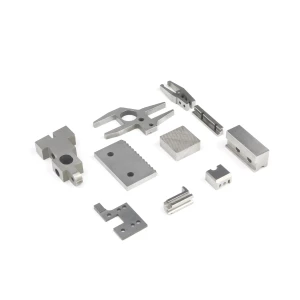Tungsten
Brand: pure tungsten or doped tungsten wire with tungsten content ≥99.95%
Size: diameter ≥0.05mm straight or rolled
We mainly provide three types of tungsten wire - pure tungsten wire and potassium-aluminum-silicon doped wire (non-sag tungsten wire).
Tungsten wire is mainly used as tube leads, special filaments such as halogen filaments, heating elements in high-temperature furnaces, vacuum deposition materials in the electronics industry, welding electrodes, and can also be used as platinum contacts in automobile engines and other types of electrical contacts.
Non-sag tungsten wire is made by doping tungsten with K (potassium) element or other elements to achieve the effect of non-sag tungsten wire.
Doping K can form bubbles in the tungsten wire, which can prevent the recrystallization of the tungsten wire.
They also result in non-sag tungsten filaments with excellent low resistance at the high temperatures of the glowing filament.
About 90% of non-sag tungsten filaments are used in incandescent lamps.
They have less wobble when used in light sources or heating elements with doped materials used in non-sag tungsten wires (W wire; tungsten wire; tungsten coil; tungsten coil; W coil).
Automotive and motorcycle lights are one of the most important applications for sagless tungsten wire.
When non-sag tungsten filament is used as the filament for this type of bulb, the filament works most effectively to achieve stable light from lamps for cars and motorcycles.
The same effect is achieved when applied to incandescent lamps.
Tungsten wire specifications
Diameter: 0.01mm~2.00mm
Level: W1
Density: At least 99.95% pure
Quality standard: ASTM B760-86
Condition: rolled or straight; black and white lines.
Advantages of tungsten wire:
1. High melting point
2. High temperature oxidation resistance
3. Long service life
4. Corrosion resistance
Tungsten Wire-1: Dimensions and Tolerances, Tungsten wire diameter is usually in terms of inches or mils (thousandths of an inch). For fine tungsten wire from 0.001 inches up to 0.020 inches in diameter, the diameter of tungsten wire is measured by weight per unit length. That is, the weight in milligrams expressed in a wire 200 mm long. Standard diameter tolerance is ±3% of body weight measurement. Smaller tolerances are available, depending on the application product line. To calculate the diameter, the formula is: D (mils) = the square root of 0.71746 x (mg weight/200 mm length), from 0.020 inches up to 0.250 inches. On thicker diameter wires, the inch or mill measurement is used. Tolerances are expressed as a percentage of diameter. Standard tolerance is ±1.5%.
Other useful formulas: m/kg = 102950/(diameter in mils) 2, Mg/200 mm = 1.9427 x (diameter in mils) 2
Tungsten wire 2: Tensile strength, the tensile strength of tungsten wire is usually expressed in grams per 200 mm (or) g/mg/200mm. The normal range of values is from 40 to 110 grams. In general, as tensile strength increases, linear straightness decreases.
Tungsten Wire - 3: Straightness, generally speaking the wire can be finished with crooked or conditional and Elmet's internal control standards, in addition, the fact that tungsten wire can be processed by mechanical or direct heat treatment. Typically, the straightness of tungsten wire is measured by cutting a 110-inch long piece of wire and letting it lie on a flat clean surface. A quantitative measure of the maximum deviation from straightness along its length.
Tungsten wire-4: Roundness, roundness = (Z largest diameter - Z smallest diameter/Z largest diameter) × 100
Tungsten Wire-5: Split, longitudinal cracks with a depth of more than 15% of the wire diameter are called splits. Tungsten wire actually checks for splitting and eddy current separation detection. Horizontal splitting into a given length of wire is usually less than 5%.
Tungsten Wire-6: Quality, tungsten wire is free of scratches, kinks and twists as long as they are detrimental to the specific end-use product. Surface roughness is supplied in black, such as drawing conditions where drawing lubricants and oxides are fired, where hydrogen or electrochemical etching remains on the surface or in cleaning conditions.
Tungsten Wire-7: Winding, a flawless spool of tungsten wire is wound. For very large diameters, the tungsten wire is coiled itself. The spool is filled flat without stacking near the flange. The outer ends of the wires are appropriately labeled and securely attached to spools or self-coils.
We have more categories for you. lf you can't find the products you want above,just fill in the form and tell us whatproducts you want to import from China.
















